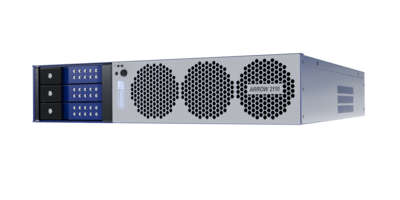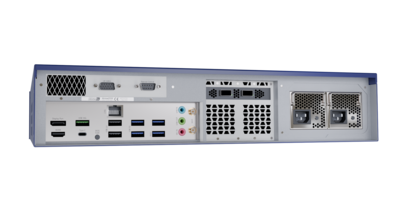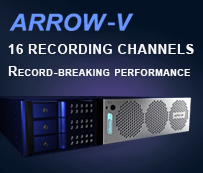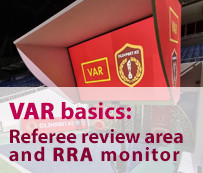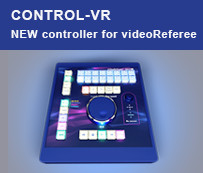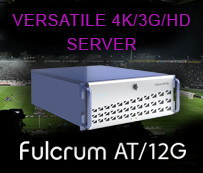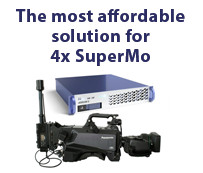
Recently, there has been a great interest in ST 2110 technology in the video production environment. Video production professionals understand the possible advantages and want to be able to transmit large volumes of information while having limited time resources. We are aiming to help them.
The SMPTE ST 2110 suite of standards, approved by SMPTE, was developed in 2017 after the ST 2022 suite of standards. It is worth noting that both of these standards were supposed to implement the desire of video engineers to make video signal transfer simpler and cheaper. After all, now that video data is completely digital, why not use a simpler transmission method. However, when it appeared, the use of ST 2110 was hindered by being economically unaffordable for most video productions.
Now, thanks to the developments in electronics and software, as well as the work of Blackmagic Design company, ST 2110 can become a transmission technology breakthrough for video production, accessible to a wide audience.
Methods of media transmission
The first type of cable used for transmitting video signals was the coaxial cable.
Then, in the 1980s and 1990s, composite video cables, SDI (Serial Digital Interface) cables, S-video cables, and component video cables were developed.
In the late 1990s and early 2000s, there was a gradual transition to digital media data transmission, and the inclusion of additional information in SDI (transmission of multiplexed signals). At the same time, the transmission was carried out over a single coaxial cable.
Later, there was a transition to 3G-SDI, and then to 4K resolution. At first, four coaxial cables were used. Then there was the transition to higher-frequency data transmission, 4K 60p and 16 audio channels.
Now, in most cases, special cards are used to process the video signal and transmit video materials to a computer. In some cases, there is a need to input and output a large number of signals. One card is capable of working with a maximum of 8 signals. That leads to an increase in the number of cards and connectors used when working with a large number of signals. At the same time, there is still a serious physical limitation on the number of signals for possible operation.
Advantages of SMPTE ST 2110
The SMPTE ST 2110 standard considers all the disadvantages of previous standards and allows moving to a new level of working with video signals.
The advantages include the use of standard communication technologies and cheaper production. Instead of point-to-point connections, IP is used, which allows transmitting several different streams over TCP/IP. This significantly saves resources at all stages of video production.
To use 32 3G channels, only one connector is required. Similarly, 8 UHD channels can be transmitted with a single cable. Because so few cables and connectors are required for transmitting a large number of channels, the requirements for server size and communication equipment are automatically reduced.
Usually, transmitting such a number of signals required a significant amount of physical space for all equipment for cards, cables, and connectors. When using ST 2110, two pairs of connectors are sufficient, which can support up to 100 video streams. This significantly saves space inside the server and the size of all equipment involved with cables and connectors .
Flexibility in media data exchange using SMPTE ST 2110
Right now, SMPTE ST 2110 is a mature standard characterized by impressive flexibility.
One of the problems when working with other standards is that if the server is designed to work with 12 SDI connections, the maximum number of HD channels for operation is still limited to 8.
When working with ST 2110, you can get more flexibility in the number of inputs and outputs of the device. One 100 Gb connector can be configured to work with either 8 UHD channels or 32 HD channels.
A classic replay server has 8 SDI I/O or 8 channels, each of which has an input and an output. When using a 100 Gb interface with the ST 2110 standard, the device can have up to 32 3G/HD channels with a single input.
In addition, ST 2110 provides flexibility in input video formats. When using other standards, the hardware determines the capabilities of working with different video formats. When using ST 2110, working with higher resolutions only requires purchasing an option for additional software.
Also, earlier, working with UHD resolution required connecting a large number of cables. When using ST 2110, it is enough to reconfigure the involved devices (server, router, graphics equipment, multiviewer) to change the received signal resolution. With sufficient power, the device (for example, a server) can also act as a router.
UHD 4K requires special connectors on the cards, but with the ST 2110 standard, a regular SFP cable is sufficient. Connecting 32 3G channels or 8 UHD channels requires only one SFP cable. There're options for 200 Gb and 400 Gb with x2 and x4 performance, respectively.
A server based on ST 2110 can also work with mixed video signals. For example, UHD is used for the input signal, UHD for playback, and 3G signals for PGM OSD, PVW OSD, and Multiview output. This allows the user to save on peripheral devices, for example, using 3G monitors with lower resolution for the outputs.
What is also important is that with ST 2110, audio is transmitted as a separate stream, i.e., there is no need to embed audio into the SDI video signal, as was the case with earlier standards.
"Red" and "Blue" subnetworks
Broadcasts of high responsibility require operation even if part of the equipment fails. For this, video processing must occur as follows: the signal is processed in two identical parts in parallel synchronously, and if there is a problem with one of them, seamless switching to the other one occurs.
In classical television production, redundancy is a complex engineering task requiring a lot of additional equipment and a large number of cables.
With the ST 2110 standard, redundancy is used in the form of a "red" and "blue" subnetworks, which is possible at the board level. No additional equipment is required to ensure equipment reliability.
Therefore, a standard 100/200/400 Gbit connection with ST 2110 for a single cable consisting of several optical connections provides operational comfort, reliability, and simplicity.
Conclusion
Now the group of ST 2110 standards is ready to become a revolution in media transmission technologies, especially in video production. ST 2110 helps to optimize infrastructure, significantly reduce the number of required connections and the space occupied by equipment, thereby allowing for substantial savings of resources. The use of the standard brings video production to a new level of efficiency, reliability, and convenience.




